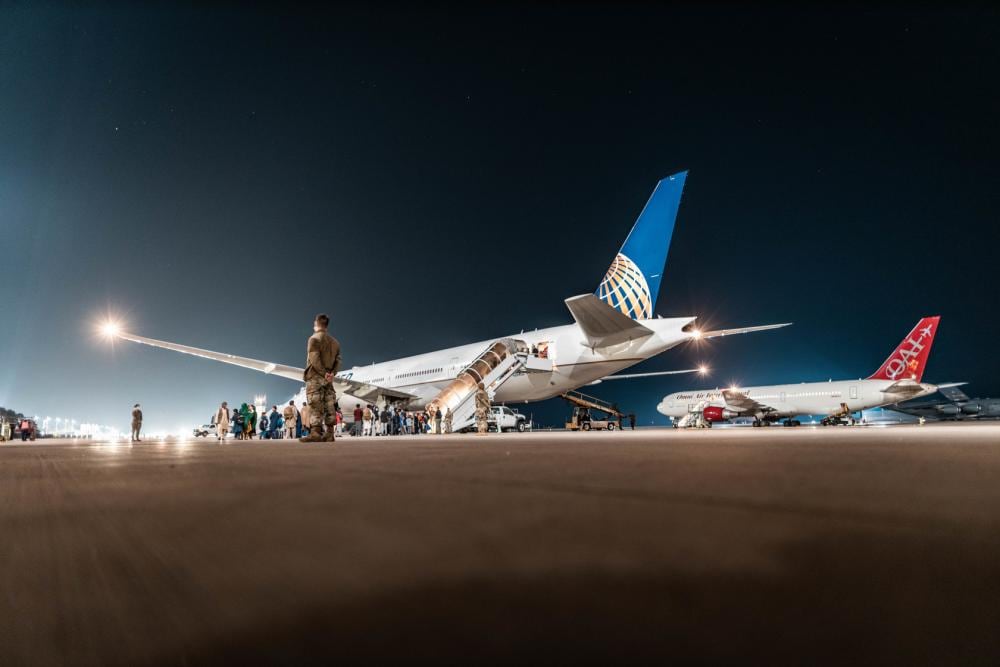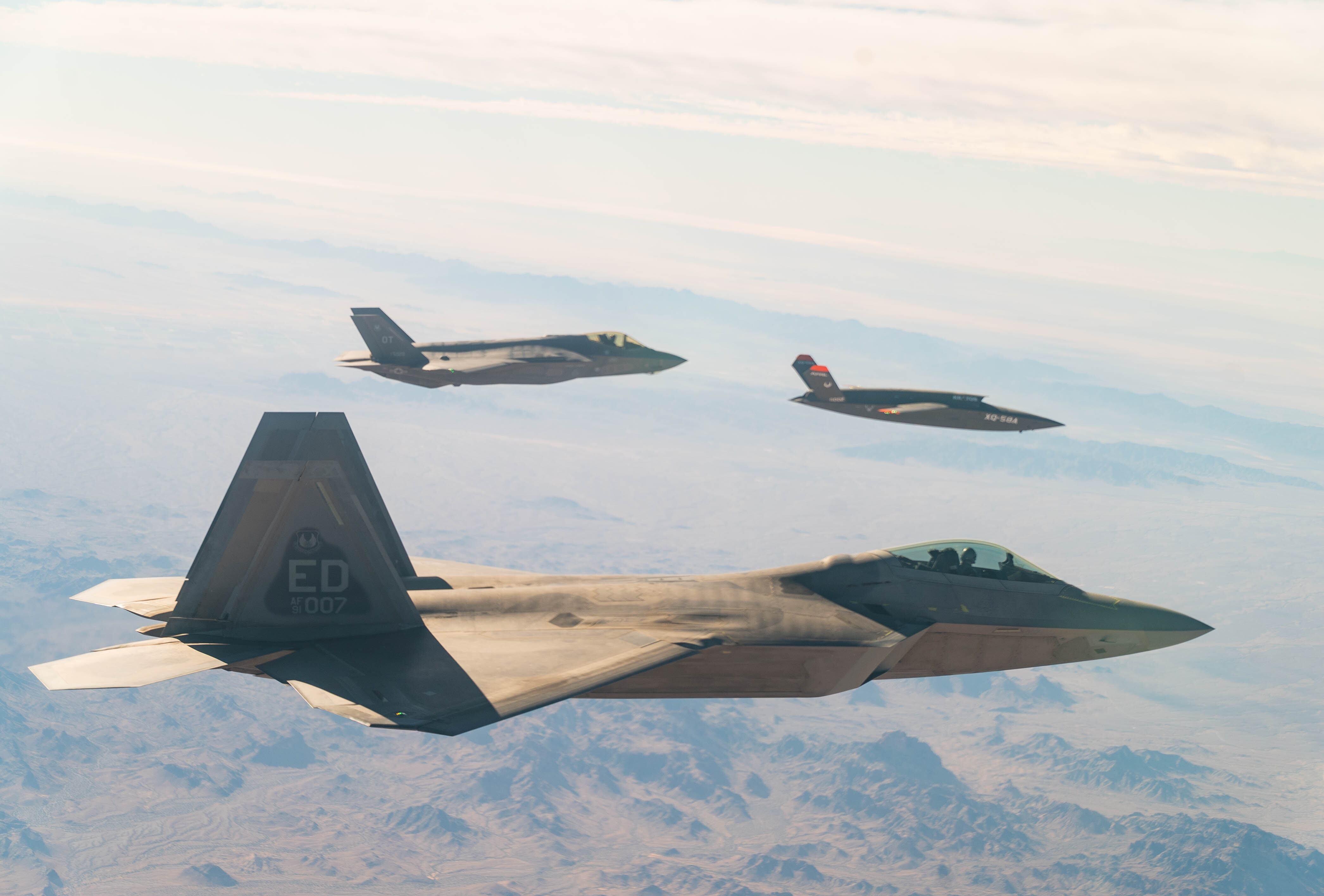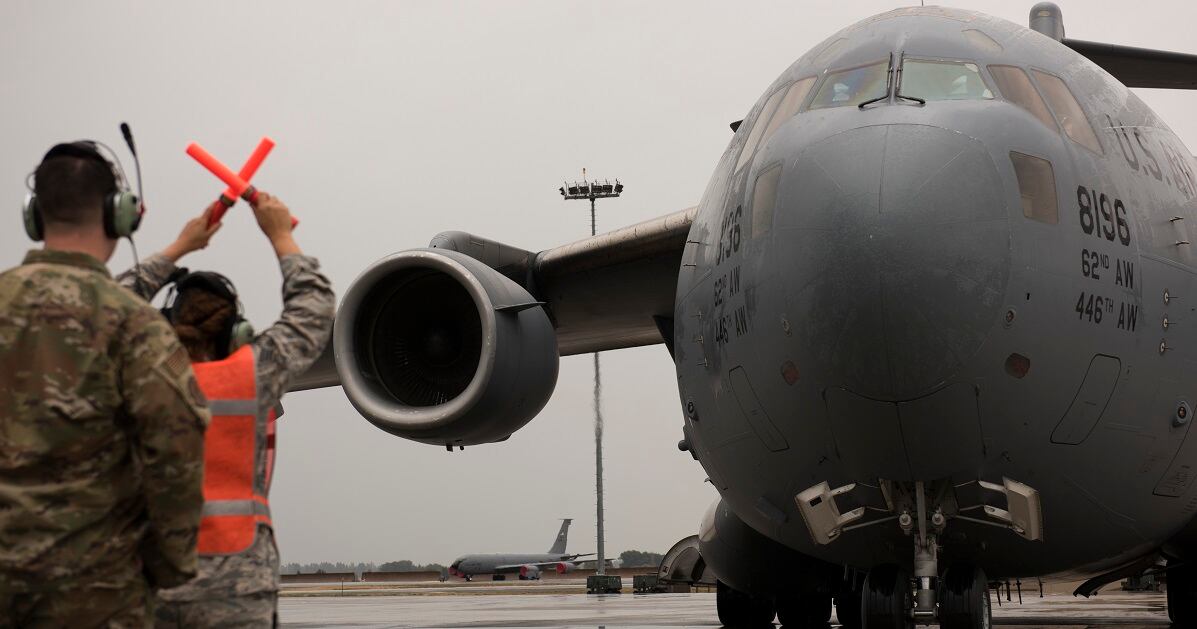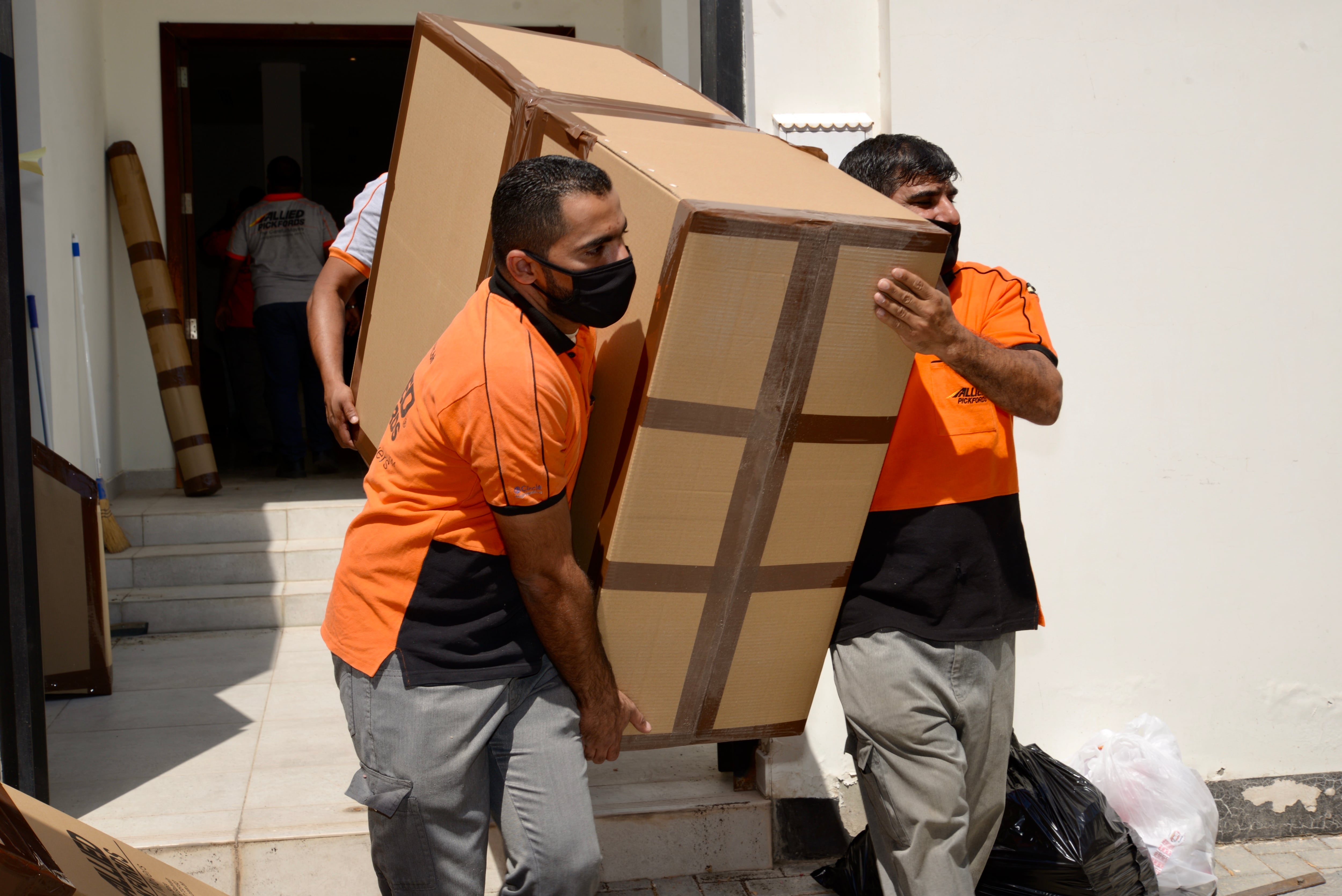The Senate on Oct. 1 confirmed Air Force Gen. Jacqueline Van Ovost, a key leader in the historic humanitarian evacuation from Afghanistan, by voice vote to lead the Pentagon’s global network of mobility assets under U.S. Transportation Command.
A pilot with more than 4,200 hours in over 30 aircraft, Van Ovost returns TRANSCOM to Air Force control after Army Gen. Stephen Lyons’ three-year stint as the first non-airman to hold the top job. She is also the first woman confirmed to run the combatant command, headquartered alongside Air Mobility Command at Scott Air Force Base, Illinois.
Van Ovost has led AMC since August 2020, overseeing about 107,000 military and civilian personnel and 1,100 aircraft spanning aerial refueling tankers, massive cargo transport planes and VIP jets like Air Force One. As TRANSCOM’s air component, AMC is seen as a natural stepping stone to commanding the military’s largest mobility organization.
“I’m very excited to move next door,” she said in an exclusive interview with Air Force Times Oct. 1. “It gives me the opportunity, really, to look, writ large, [at] strategic competition into the future and how we’re going to weave in logistics.”
RELATED

Van Ovost is a career mobility airman who graduated from the U.S. Air Force Academy in 1988 and has since commanded the 384th Air Refueling Squadron at McConnell Air Force Base, Kansas; the 12th Flying Training Wing at Joint Base San Antonio-Randolph, Texas; and the 89th Airlift Wing, or Presidential Airlift Wing, at Joint Base Andrews, Maryland.
She’s also served as the Joint Staff’s vice director; the Air Force’s staff director; U.S. Central Command’s head of mobility forces; and vice commander of the U.S. Air Force Expeditionary Center, a school focused on rapid-response and combat mobility operations.
The four-star will take over at TRANSCOM as the military looks to revamp how it handles logistics for faster-paced, more complex warfare. To succeed, she said, the mobility enterprise needs to get better at sharing data and using it to make sound decisions.
That put AMC at the center of the Air Force’s experiments to turn tanker aircraft into information-sharing hubs and connect to satellite Internet in flight.
RELATED

“I wanted our airmen to see what more they could do if they were connected and they had situational awareness, not just with the Air Force, but with the joint force,” Van Ovost said. “I think that started a hunger where airmen are saying, ‘We could do other things as well.’”
Evacuating more than 124,000 people from Afghanistan as the Taliban returned to power over the summer proved the value of data in logistics, and of operating in a region where American troops can’t rely on established, well-equipped bases — key tenets of the Pentagon’s pivot from focusing on counterterrorism to future conflict in the vast Indo-Pacific.
Instead of being able to use multiple jumping-off points across the country, Hamid Karzai International Airport in the Afghan capital of Kabul was the sole runway available to American troops at the end of the U.S. withdrawal. Situational awareness was the biggest limiting factor in what was already a chaotic, multinational evacuation punctuated by terror threats and the collapse of the Afghan government, Van Ovost said.
Plans to shuttle people from Kabul to military bases in Qatar and Kuwait, then to installations across Europe and then to the United States, rapidly changed along with the unpredictable situation on the ground and in Afghan airspace. At first, AMC worked off of estimates that 6,000 Americans and Afghan Special Immigrant Visa holders and applicants who needed to escape. That ballooned to more than 100,000 people within 72 hours.
“We did not have a good understanding of the data at … the tactical level, the operational level and strategic level,” she said. “We could have made better, more effective decisions, I think, if we had that data.”
Lines of communication on the ground became unusable early on in the withdrawal, forcing troops to talk via airborne data links, Van Ovost noted at her Sept. 23 confirmation hearing in the Senate. She’d like to take the results of a recent study of future mobility requirements and use them in upcoming wargames and exercises to strengthen joint deployments and supply chains.
RELATED

AMC jets have boosted their combat-readiness rates in the past few years amid a servicewide push to repair planes faster and get crews the rest and training they need to recharge. Still, Van Ovost said readiness depends on adequately preparing troops for a future in which aircraft may be more frequently targeted and unable to fly as freely as they can now.
Lt. Gen. Mike Minihan, the deputy commander of U.S. Indo-Pacific Command, will take on those challenges as he replaces Van Ovost at AMC, along with a promotion to four-star general, on Tuesday. He’ll also be in charge of planning for mobility fleets of the future and shepherding the troubled new KC-46 Pegasus tanker into the inventory while Boeing fixes faulty tech over the next several years.
Minihan is a “mobility zealot” who will take AMC to the next level, Van Ovost said.
Meanwhile, she’ll take on a broader transportation portfolio that includes moving household goods around the globe as service members and their families head to new assignments. TRANSCOM is trying to reform that flawed program by picking a contractor to handle day-to-day management of that work.
“The current program is really incapable of consistently providing that quality capacity, accountability and transparency,” Van Ovost told the Senate Armed Services Committee last month. “I will ensure … that all the mechanisms are in place for the single move manager to be able to effectively execute and meet the standards that our members and families deserve.”
RELATED

Van Ovost will continue to push for improved cybersecurity at the commercial companies that help the military move goods and supplies around the world. Shrinking the Air Force’s C-130 fleet could also make way for other assets that would be more flexible and resilient against threats, she told lawmakers.
“It is becoming apparent that, potentially, runway-independent operations might be a key capability. In that case, we have to discover how it is we’re going to support and sustain runway-independent operations,” she said.
She also backed the Navy’s plan to buy used ships to reconstitute the aging Ready Reserve fleet, which helps rapidly deploy military equipment.
About a year after Army Gen. Mark Milley, chairman of the Joint Chiefs of Staff, and former Defense Secretary Mark Esper reportedly decided to delay recommending Van Ovost for the TRANSCOM job until after the 2020 presidential election — fearing then-President Donald Trump would oppose the nomination of a woman for that job — the air mobility boss argued an earlier nomination wouldn’t have mattered much in the end.
Combatant commanders spend about three years in their jobs, so Van Ovost said she wouldn’t have replaced Lyons until late summer or fall anyway.
“They didn’t have to do it anytime sooner, so they didn’t. … There was never [a rush to confirm her] because they weren’t even doing confirmations back then,” she said. “It would be a new Senate and a new Congress in session, so I don’t think that the administration would have even moved forward on it.”
Now across the congressional finish line, Van Ovost is slated to start her new job Oct. 15.
“I will be a demanding customer of AMC,” she said with a laugh. “I think that they would expect me to be.”
Rachel Cohen is the editor of Air Force Times. She joined the publication as its senior reporter in March 2021. Her work has appeared in the Washington Post, the Frederick News-Post (Md.), Air and Space Forces Magazine, Inside Defense, Inside Health Policy and elsewhere.




